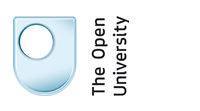

| : | Direct Combination |
DC in a nutshell
Publications
Presentations
Implementations
Research Programme
Reflective Composition
Citations
Simon Holland
The Music Computing Lab
Admin
 |  | ||
DC in a nutshell Publications Presentations Implementations Research Programme Reflective Composition Citations Simon Holland The Music Computing Lab Admin |
Research ProgrammeDirect CombinationDirect Combination had its origins as an elegant copy and paste mechanism for re-combining musical data types on the desktop. However, it has now been re-framed, modified, generalised and re-engineered to apply to virtually any kind of user interface, with applications in almost any end-user domain, in the context of more or less any kind of computing technology ((including the desktop, mobile devices, smart phones, web pages, pervasive interaction, speech interfaces, and others) HCI2004HollandDC.pdf. It has particularly strong applications in mobile and ubiquitous computing. This offers many lines of attack for research.Reflective CompositionFor Direct Combination to be implemented elegantly and with maximum flexibility, a new approach to object orientation (Reflective Composition OOPSLA 2004 RC Holland Final.pdf) is required, though this is not essential; there are straightforward table-based alternative implementations that allow Direct Combination to be retrofitted using standard tools, while retaining the most available benefits. At the same time, Reflective Composition offers major benefits as an independent line of research.Next StepsNow that other long term priorities are making progress (The Music Computing Lab, Harmony Space, a return to the above research lines of research is timely. |